Premium Only Content

Bang Your Head Slick Black Cadilliac Highway To Hell Quiet Riot
Metal Health (Bang Your Head) Album: Metal Health (1983)
Slick Black Cadillac Quiet Album: Riot II (1978)
Highway To Hell Album: Highway to Hell (2016)
by Quiet Riot
"Metal Health", sometimes listed as "Metal Health (Bang Your Head)", "Bang Your Head" or, as it was listed on the Billboard Hot 100, "Bang Your Head (Metal Health)", is a song by the American heavy metal band Quiet Riot on their breakthrough album, Metal Health. One of their best known hits and receiving heavy MTV music video and radio play, "Metal Health" was the band's second and final top 40 hit, peaking at #31 on the Billboard Hot 100.
Being about the headbanging subculture, the song caught the attention of many heavy metal fans on its release. The single contained both the studio-recorded version and a live version, which was later released on their Greatest Hits compilation. The lyric, "well now you're here, there's no way back", eventually became the title for Quiet Riot's documentary, released in 2015.
The song title is a play on the phrase "Mental Health," and is a celebration of the rebellious nature of heavy metal and fans who bang their heads to the music. Lead singer Kevin DuBrow wrote the lyric, which is based on the slights he heard throughout his life. DuBrow, who died of a drug overdose in 2007 at age 52, did indeed have a "mouth like an alligator," as he would always speak his mind.
Thanks to a video that got lots of airplay on MTV, this song helped bring heavy metal music with a pop sheen into the mainstream, paving the way for photogenic hair bands of the '80s like Mötley Crüe and Twisted Sister.
Quiet Riot had been around for a while, releasing their first album in 1977 with Randy Rhoads, who later became Ozzy Osbourne's go-to axeman, on guitar. By the time they released their third album, Metal Health, they were polished and poised for stardom. "Metal Health" was the first single, but it went nowhere. Their cover of the Slade song "Cum On Feel The Noize" was released as a follow-up, and that one caught on in America, going to #5 in November 1983, the same month the Metal Health album topped the chart, becoming the first metal album to do so. With the band now established, "Metal Health" went up the chart, landing at #31 in February 1984.
Guitarist Carlos Cavazo and drummer Frankie Banali are the co-writers on this track along with Kevin DuBrow. "We were huge fans of AC/DC, so we wanted something that had a very simple, straight ahead groove at a certain tempo," Banali said in a Songfacts interview. "It went through a lot of different changes, and what I mean by 'changes,' a lot of that song has to do with the tempo. I listen to a lot of classical music and jazz, and the thing that I found interesting about both classical music and jazz is that certain parts of a song only work at a certain tempo, and they don't work at another tempo. With jazz, they shift gears - the same thing with classical. With rock 'n' roll, you basically start at a tempo and you end at that tempo. So the tempo on that record is not slow, but it really digs into the groove. It didn't work at that tempo live, which is why we actually played it a little faster live - because it gets the energy of the audience. So that is something that we paid attention to.
And at one point, Metal Health was much longer than it is now. Kevin was really good about trimming fat."
The video, directed by Mark Rezyka, is a case study on how to make a memorable clip on the cheap. It was the band's first video, and the budget was very tight. They got a community collage to let them film it there for free, and recruited student to form the crowd in the stage scenes.
As opposed to many early MTV favorites, it has a cohesive storyline: Kevin Dubrow is strapped into a straightjacket, wearing a Hannibal Lecter mask, trapped in a padded room. He makes a daring escape from the asylum, then drops from the rafters to rock the crowd at the concert.
MTV loved it, since zeroed in on their target demographic of young male rock fans, but it didn't do well at first. After "Cum On Feel The Noize" (also directed by Rezyka) took off, the network revived "Metal Health." Dubrow's asylum look became one of the iconic images of MTV.
On the album, the song is listed as "Metal Health." The single was released as "Bang Your Head (Metal Health)" in most territories, and a version of the song is published as "Metal Health (Bang Your Head)," which Frankie Banali says is the official title.
This song provided not just the title track for the album, but also the visual presentation. The album cover shows DuBrow in a straightjacket and mask, as later seen in the video. The mask became a kind of talisman for the band, showing up in their promotional materials and on later album art and videos.
The songwriter/producer Spencer Proffer produced the album, including this track. Proffer owned a recording studio and was key to giving Quiet Riot their start, but much of his later work was far less Metal: he was the music consultant on the show Sabrina, The Teenage Witch, and produced the TV series Happily Ever After: Fairy Tales for Every Child.
The song can be heard in the movie Footloose, playing in car of the character Ren. It was also used as the entrance theme for Randy The Ram in the 2008 movie The Wrestler.
In 1998, Kevin Dubrow sang on an acoustic version with The Neanderthal Spongecake that appeared on their album The Side Effects Of Napalm. Cevin Soling of The Neanderthal Spongecake explained how this came together: "Eric Clapton had done his cover of 'Layla,' of his own song. I thought it was just atrocious, doing this mellow version and that acoustic thing. I thought it was an abomination, and so as sort of a joke I played this acoustic version of Quiet Riot's 'Metal Health.' And so, I was working out in the studio while we were working on our album, and it just started coming out really, really well - an acoustic version of the ultimate headbanging song. But it came out brilliantly, and I started adding strings and a choir, and it got pretty insane. But the problem was the original concept of the vocals was supposed to be this hard core kind of slacker vocals over this acoustic sound. But the music was just too good to sort of do that to.
So I managed to get in touch with Kevin Dubrow, the lead singer of Quiet Riot, and asked him if he was interested in singing on it. His initial response was no, because I guess Marilyn Manson was responsible for getting the band back together again, and then they were actually going to be cutting a new version of that song to sort of exploit it. But he agreed to listen to it anyway. And then after I sent it out to him, he called me immediately and said, 'I have to sing on this. Please let me sing on this.' Because it was such a radical departure, and so unexpected.
He was working as a DJ out in Vegas at the time, and so I flew out to Vegas and recorded with him, and Lindsey Buckingham's son actually was the engineer there. The whole experience was just a lot of fun, working with him. And he was great. I wasn't so much into the heavy metal music, but he was telling me how he had this terrible reputation, but I didn't know anything about his reputation or anything about him being difficult. Because he could not have been easier to work with, could not have been more professional. The whole thing was a pleasure. And I thought, hey, this could be kind of fun to do this kind of concept for a whole album. But not necessarily having people do their own materials, pairing people up with the least likely song that you could imagine them doing.
The main riff/structure of the song come from an older track entitled "No More Booze," which was originally performed by Snow, Carlos and Tony Cavazo's pre-Quiet Riot band. A live version of the song can be heard on the At Last recordings, which finally received a release in 2017.
Quiet Riot II is the second studio album released on December 2, 1978. The album's opening track, "Slick Black Cadillac", was re-recorded by Quiet Riot for their 1983 breakthrough album Metal Health.
As with Quiet Riot's debut album, Quiet Riot II was released only in Japan, and to this day has never been officially released anywhere else. This is the final Quiet Riot album to feature lead guitarist and founder Randy Rhoads, who departed the following year to join former Black Sabbath vocalist Ozzy Osbourne in a new group.
Although bassist Rudy Sarzo is credited and pictured on the album cover, Quiet Riot II was recorded before he joined the band, and the work of bassist Kelly Garni is featured on the album. Tensions between Garni and vocalist Kevin DuBrow boiled over during the album's recording, with Garni hatching a plan to shoot and kill DuBrow at the studio. Garni was arrested and immediately fired from Quiet Riot.
Quiet Riot chose to cover Highway to Hell to pay homage to AC/DC and showcase their musical prowess.
Quiet Riot
Kevin DuBrow – lead vocals
Carlos Cavazo – guitars, backing vocals
Rudy Sarzo – bass, backing vocals
Frankie Banali – drums, backing vocals
Chuck Wright – bass
The Killer Bees – backing vocals
-
 2:32:15
2:32:15
Matt Kohrs
15 hours agoRumble CEO Chris Pavlovski Talks $775M Tether Partnership || The MK Show
83.5K20 -
 28:23
28:23
Dave Portnoy
15 hours agoDavey Day Trader Presented by Kraken - December 23, 2024
98K32 -
 59:29
59:29
BonginoReport
6 hours agoTrump, Murder Plots, and the Christmas Miracle: Evita + Jack Posobiec (Ep.110) - 12/23/2024
111K86 -
 2:59:14
2:59:14
Wendy Bell Radio
8 hours agoNothing To See Here
97.4K56 -
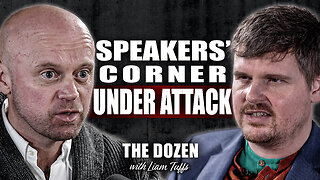 2:12:18
2:12:18
TheDozenPodcast
1 day agoIslam vs Christianity: Bob of Speakers' Corner
93.9K23 -
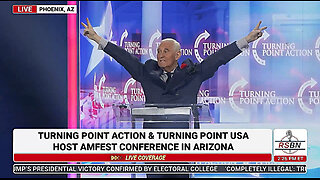 14:36
14:36
The StoneZONE with Roger Stone
1 day agoRoger Stone Delivers Riveting Speech at Turning Point’s AMFEST 2024 | FULL SPEECH
116K27 -
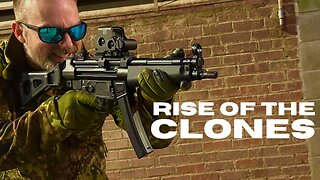 18:59
18:59
Fit'n Fire
14 hours ago $7.16 earnedZenith ZF5 The Best MP5 Clone available
78.4K3 -
 58:34
58:34
Rethinking the Dollar
23 hours agoTrump Faces 'Big Mess' Ahead | RTD News Update
56.6K5 -
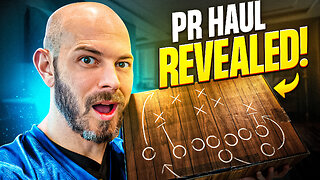 5:35
5:35
Dermatologist Dr. Dustin Portela
23 hours ago $2.80 earnedUnboxing Neutrogena PR Box: Skincare Products and Surprises!
69K5 -
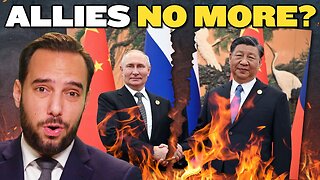 11:20
11:20
China Uncensored
23 hours agoCan the US Exploit a Rift Between China and Russia?
79.8K26